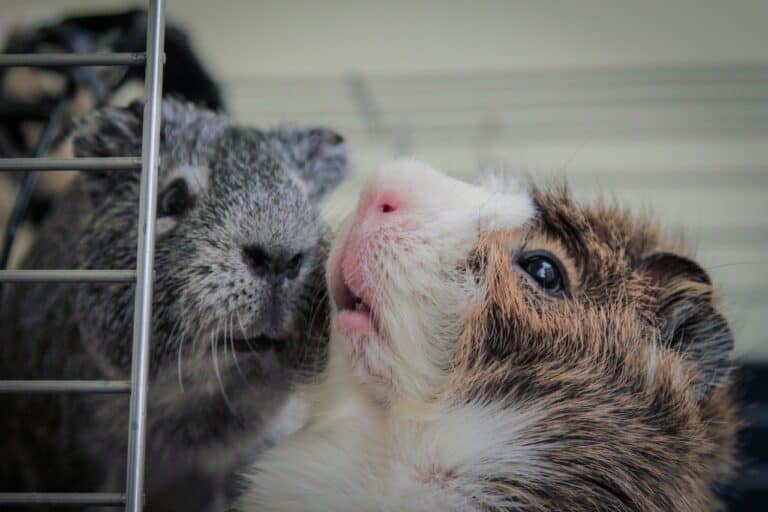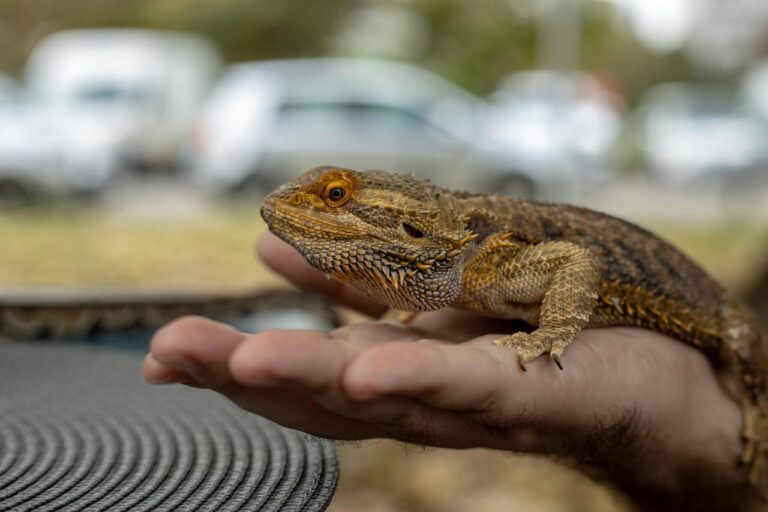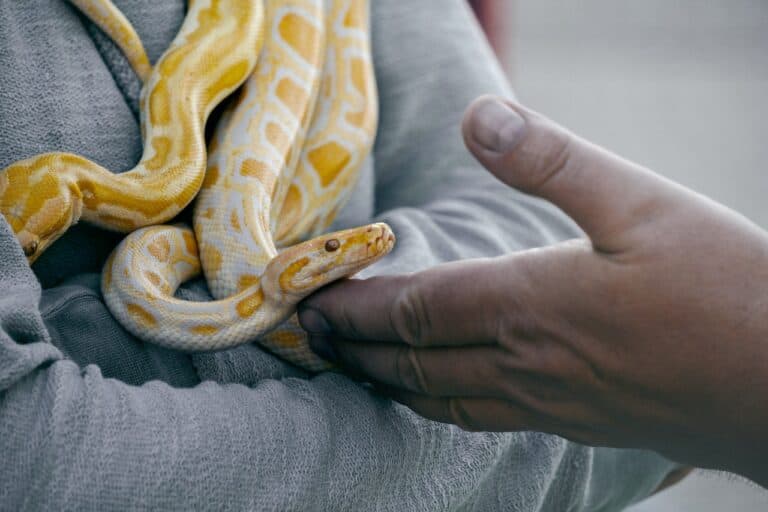Creating the Perfect Aquarium for Exotic Aquatic Pets [Full Guide]
Are you considering getting an exotic aquatic pet?
Creating the perfect aquarium for your new companions is an essential step in ensuring their well-being and happiness.
By providing the right environment, you can mimic their natural habitat and promote their overall health.
In this article, we will guide you through the process of setting up an ideal aquarium for your exotic aquatic pets, from selecting the right tank to maintaining optimal water conditions.
Key Takeaways:
- Research and choose exotic aquatic pets that are compatible with each other and your level of commitment.
- Select an appropriately sized aquarium that provides ample space for your pets to thrive.
- Equip your aquarium with essential supplies, including a filtration system, heater, lighting, substrate, and decorations.
- Maintain optimal water conditions through proper temperature, filtration, and regular testing.
- Introduce your pets gradually and provide them with a balanced diet.
- Perform regular cleaning and maintenance tasks to keep your aquarium clean and healthy.
- Troubleshoot common issues like algae growth and disease prevention.
- Stay informed, seek expert advice when needed, and enjoy the experience of creating the perfect aquarium for your exotic aquatic pets.
When selecting your exotic aquatic pets, consider the following factors:
- Species compatibility: Ensure that the species you choose can coexist peacefully in the same aquarium.
- Size: Take into account the adult size of the species to ensure they have enough space to thrive.
- Behavior and temperament: Some species may be more aggressive or territorial, so it’s important to understand their behavior traits.
Choosing the Right Aquarium Size
The size of your aquarium plays a crucial role in providing a suitable living space for your exotic aquatic pets.
It’s recommended to select the largest tank that fits your available space and budget.
A larger tank offers more stability in terms of water parameters and allows for better swimming space, especially for active fish species.
It’s important to consider the adult size of the species you plan to keep and their compatibility with other tank mates.
Here are some guidelines for choosing the right aquarium size:
- Research the specific space requirements of the species you intend to keep.
- Consider the swimming habits and activity levels of your chosen aquatic pets.
- Allow room for proper filtration systems and equipment within the tank.
Essential Equipment and Supplies
To ensure a thriving aquarium, you will need various equipment and supplies.
Some of the essential items include:
- Filtration system: Choose a filter that suits the size of your tank and provides adequate mechanical, chemical, and biological filtration.
- Heater: Select a reliable heater that can maintain the appropriate temperature range for your chosen species.
- Thermometer: Use a thermometer to monitor the water temperature consistently.
- Lighting system: Depending on the needs of your aquatic pets and any live plants, select a lighting system that provides the required intensity and spectrum.
- Substrate: Choose a suitable substrate based on the preferences of your species, such as sand, gravel, or specialized substrates for planted tanks.
- Aquatic plants and decorations: Provide hiding places and natural aesthetics with live plants and decorations like rocks, driftwood, and artificial structures.
- Water conditioner: Treat tap water with a water conditioner to remove harmful chemicals like chlorine and chloramines.
- Test kit: Regularly test the water parameters using a quality test kit to ensure they remain within the appropriate range.
Creating a Suitable Habitat
1. Substrate Selection
Choosing the right substrate is crucial, as it not only enhances the aesthetics of your aquarium but also provides a functional purpose.
Consider the following substrate options based on your exotic aquatic pets:
- Sand: Suitable for species that burrow or sift through the substrate, such as certain types of fish and invertebrates.
- Gravel: Provides a versatile option and comes in various colors and sizes. Some species prefer larger gravel for easier digging or plant anchoring.
- Planted tank substrates: Designed specifically for aquariums with live plants, these substrates often contain nutrients that promote plant growth.
2. Aquatic Plants and Decorations
Aquatic plants and decorations offer shelter, hiding spots, and a natural aesthetic appeal to the aquarium.
Consider the following:
- Live plants: They contribute to water quality by absorbing nitrates and providing oxygen. Research the lighting requirements and compatibility of different plant species with your chosen lighting system.
- Decorations: Rocks, driftwood, and artificial structures provide additional hiding places and create a visually pleasing environment. Ensure that the decorations are safe for your aquatic pets and won’t alter water chemistry.
3. Lighting Requirements
Proper lighting is essential for the growth of aquatic plants and the overall well-being of your exotic aquatic pets.
Consider the following:
- Light intensity: Different species have different lighting requirements, ranging from low to high intensity. Adjust the lighting system accordingly to meet the needs of your chosen species.
- Light duration: Maintain a consistent lighting schedule to mimic natural day and night cycles. Most aquariums require around 8 to 10 hours of light per day, but this can vary depending on the species and presence of live plants.
Maintaining Proper Water Conditions
Maintaining optimal water conditions is vital for the health and longevity of your exotic aquatic pets.
Consider the following factors when ensuring proper water conditions:
1. Temperature and Heating
Most exotic aquatic pets require specific temperature ranges to thrive.
Use a reliable heater and thermometer to maintain stable water temperatures within the recommended range for your chosen species.
Some tips to remember:
- Research the preferred temperature range of your species and set the heater accordingly.
- Avoid placing the aquarium near heat sources or areas with fluctuating temperatures.
- Monitor the temperature regularly to ensure consistency.
2. Filtration and Water Circulation
A robust filtration system is necessary to remove waste, debris, and harmful toxins from the water.
Additionally, proper water circulation helps distribute heat, oxygen, and nutrients throughout the aquarium.
Consider the following:
- Choose a filter that matches the size of your tank and provides adequate filtration for the bio-load of your aquatic pets.
- Position the filter outlet to ensure water movement across the entire tank, avoiding stagnant areas.
- Regularly clean or replace filter media to maintain optimal filtration efficiency.
3. Water Quality and Testing
Regularly testing the water parameters is crucial to maintaining a healthy aquarium.
Test kits are available to measure parameters such as pH, ammonia, nitrite, and nitrate levels.
Based on the test results, perform water changes and use appropriate water conditioners to keep the water chemistry in balance.
Some tips for maintaining water quality:
- Perform regular water changes to remove accumulated toxins and replenish essential minerals.
- Use a water conditioner to neutralize chlorine, chloramines, and heavy metals found in tap water.
- Keep an eye on the pH level and adjust if necessary to match the preferred range of your species.
- Test the water parameters consistently to detect any issues early on.
Introducing Your Exotic Aquatic Pets
Before introducing your exotic aquatic pets to their new home, it’s important to acclimate them gradually.
This process involves equalizing the temperature and chemistry of the water in their transport bag with that of the aquarium.
Proper acclimation helps reduce stress and increases the likelihood of a successful transition.
Follow these steps for a smooth introduction:
- Float the sealed bag containing the pet in the aquarium for around 15-20 minutes to equalize the temperature.
- Open the bag and add a small amount of aquarium water into the bag every few minutes for approximately 30 minutes.
- After the acclimation period, gently net the pet from the bag and release it into the aquarium.
- Monitor the pet closely for any signs of stress or aggression, and provide appropriate hiding places if needed.
- Feeding and Nutrition
Providing a balanced and species-appropriate diet is crucial for the health and vitality of your exotic aquatic pets.
Research the specific dietary needs of your chosen species and offer a variety of high-quality foods, including pellets, flakes, frozen or live foods, and specialized diets if necessary.
Consider the following tips:
- Feed your aquatic pets in small portions to prevent overeating and water pollution.
- Offer a varied diet that includes both dry and frozen/live foods to ensure nutritional diversity.
- Observe your pets’ feeding behavior and adjust the amount and frequency accordingly.
- Remove any uneaten food after each feeding to maintain water quality.
Cleaning and Maintenance
Regular cleaning and maintenance are essential for the long-term success of your aquarium.
Tasks such as partial water changes, gravel vacuuming, and cleaning filters should be performed on a regular schedule.
Additionally, remove any debris or uneaten food from the tank to maintain optimal water quality.
Consider the following maintenance tips:
- Perform regular partial water changes (around 20% of the total volume) every 2-4 weeks, depending on the tank size and stocking levels.
- Use a gravel vacuum to remove accumulated waste and debris from the substrate during water changes.
- Clean the aquarium glass regularly to maintain visibility and prevent algae growth.
- Rinse filter media in dechlorinated water to remove excess debris without harming beneficial bacteria.
Troubleshooting Common Issues
Despite your best efforts, occasional challenges may arise.
Here are two common issues you may encounter:
Algae Control
Algae growth is a common concern in aquariums.
To control algae, ensure proper lighting duration, reduce excess nutrients through regular water changes, and consider adding algae-eating fish or invertebrates as natural cleaners.
Additional tips for algae control:
- Maintain a consistent lighting schedule and avoid excessive light exposure.
- Limit nutrient buildup by not overfeeding and promptly removing any decaying matter.
- Introduce algae-eating fish or invertebrates like snails or shrimp, which can help control algae growth.
Disease Prevention
Maintaining a clean and stress-free environment helps prevent diseases.
Quarantine new additions before introducing them to the main tank, and promptly address any signs of illness, such as abnormal behavior, loss of appetite, or physical abnormalities.
Research common diseases and consult with a knowledgeable aquarium professional for proper diagnosis and treatment options.
Consider these preventive measures:
- Quarantine new additions in a separate tank for a few weeks to monitor for any signs of illness.
- Maintain optimal water conditions and good hygiene to reduce stress and the risk of disease.
- Observe your pets closely for any changes in behavior or physical appearance, and seek professional advice if necessary.
Conclusion
Creating the perfect aquarium for your exotic aquatic pets requires careful planning, research, and attention to detail.
By providing a suitable habitat, maintaining optimal water conditions, and offering proper care and nutrition, you can create an engaging and thriving environment for your aquatic companions.
Remember to stay informed, seek expert advice when needed, and enjoy the rewarding experience of caring for these fascinating creatures.
FAQs
Can I mix different species in the same aquarium?
Mixing different species requires careful consideration of their compatibility, aggression levels, and habitat requirements.
Research each species thoroughly before making any decisions.
Do I need a special permit to keep exotic aquatic pets?
Certain species may require special permits or licenses due to their protected or invasive nature.
Check your local regulations and consult with reputable pet stores or aquatic experts to ensure compliance.
How can I prevent my aquarium from developing a foul odor?
A: Foul odors can be a sign of poor water quality or decaying organic matter.
Maintain proper filtration, perform regular water changes, and remove any uneaten food or debris promptly to prevent odors.
Can I use tap water in my aquarium?
Tap water can be used in aquariums, but it must be treated with a water conditioner to remove chlorine, chloramines, and heavy metals that can be harmful to aquatic life.
How often should I clean my aquarium?
Regular maintenance tasks such as partial water changes, gravel vacuuming, and filter cleaning should be performed on a regular schedule.
The frequency may vary depending on the tank size, stocking levels, and water parameters.
Peter Stones is the founder of Exotic Pets Place, the leading online resource for exotic pet care information.
With over 10 years of hands-on exotic pet ownership experience, he is deeply passionate about sharing his expertise to help others properly care for their unusual pets.
When he's not writing extensively researched articles or connecting with fellow exotic pet enthusiasts worldwide, you can find Peter at home tending to his own beloved menagerie of exotic animals.

![Creating the Perfect Aquarium for Exotic Aquatic Pets [Full Guide], a girl looking at a fish tank](https://exoticpetsplace.com/wp-content/uploads/2023/06/Creating-the-Perfect-Aquarium-for-Exotic-Aquatic-Pets-Full-Guide-a-girl-looking-at-a-fish-tank.jpg)





